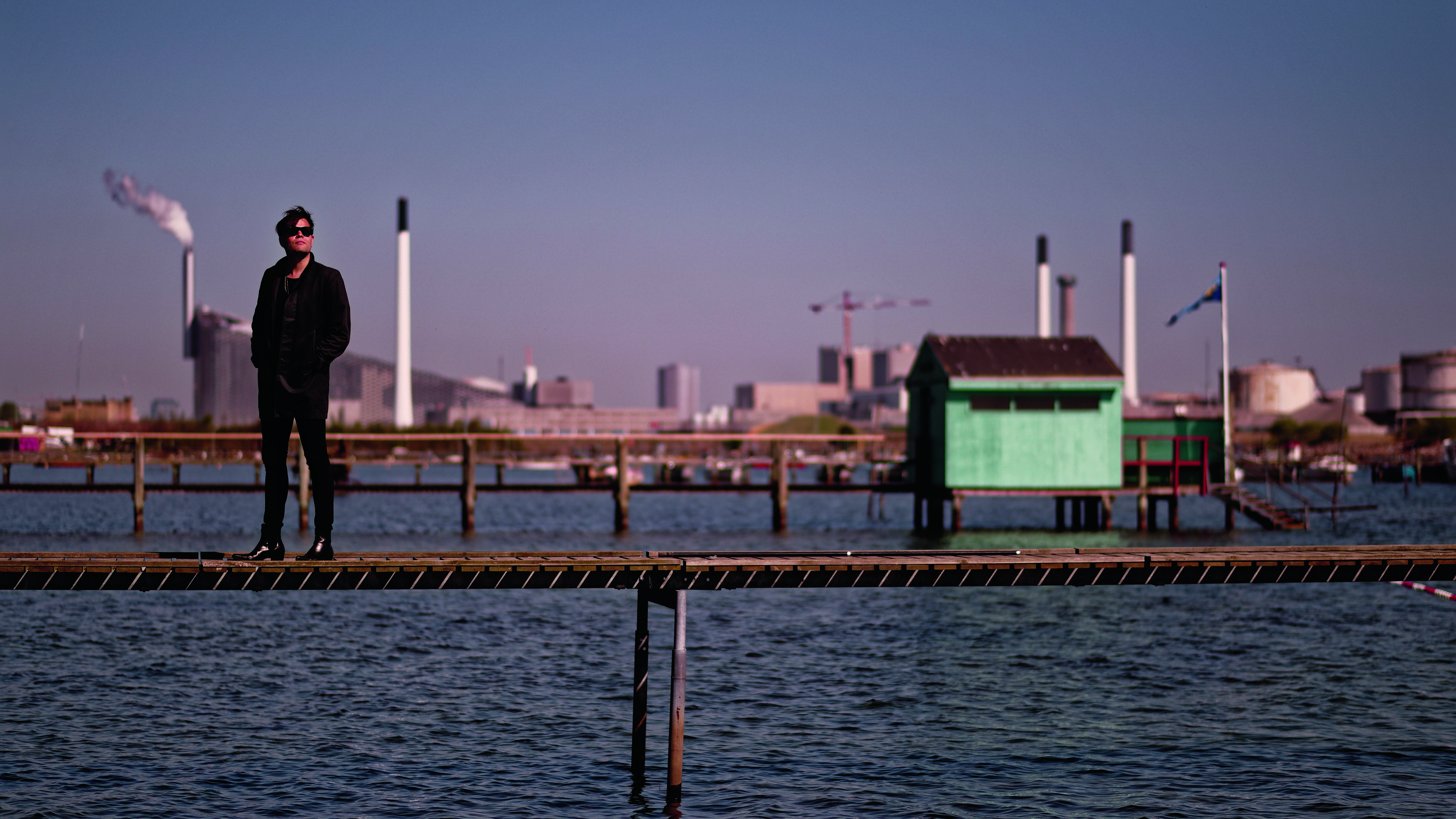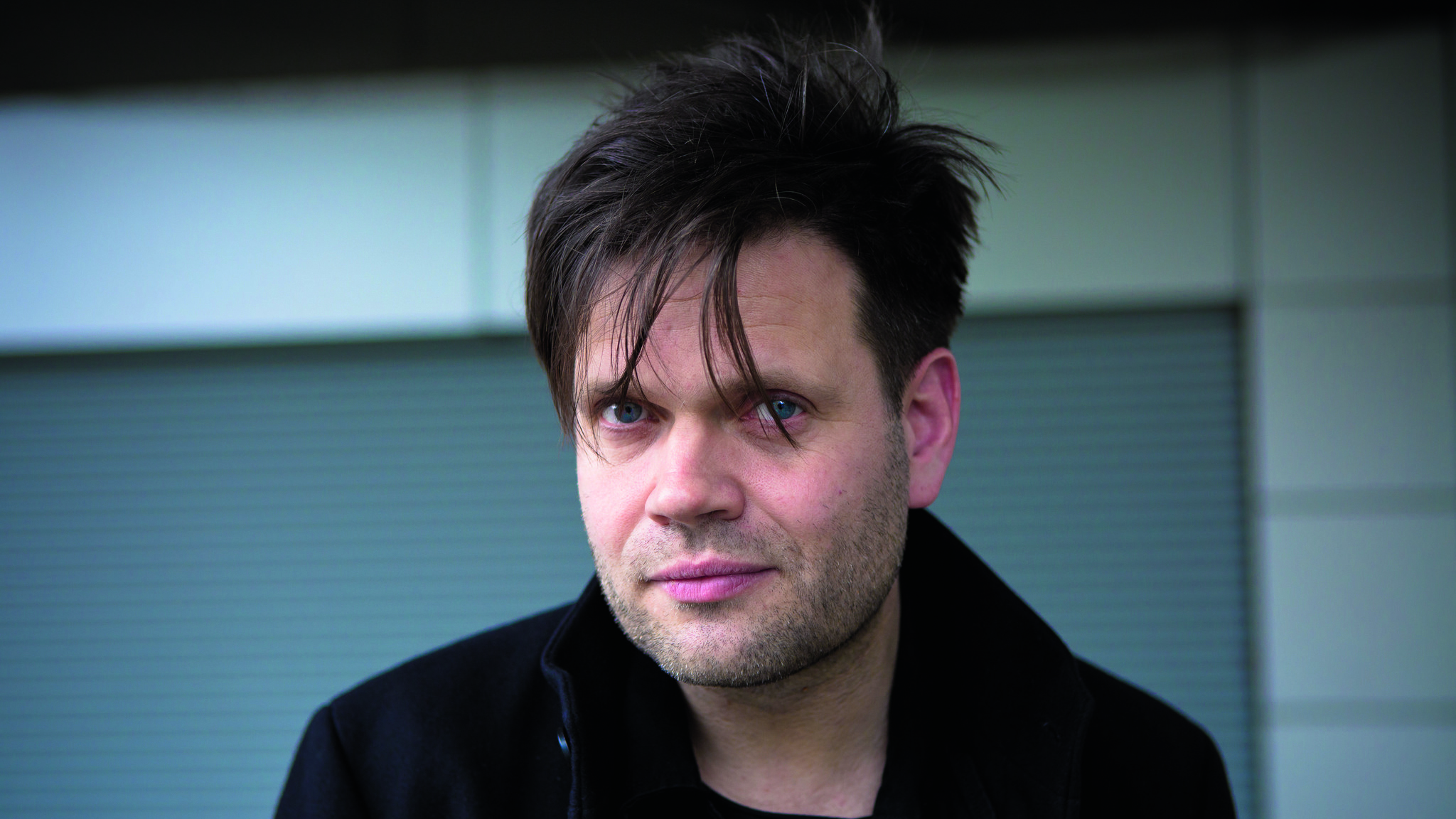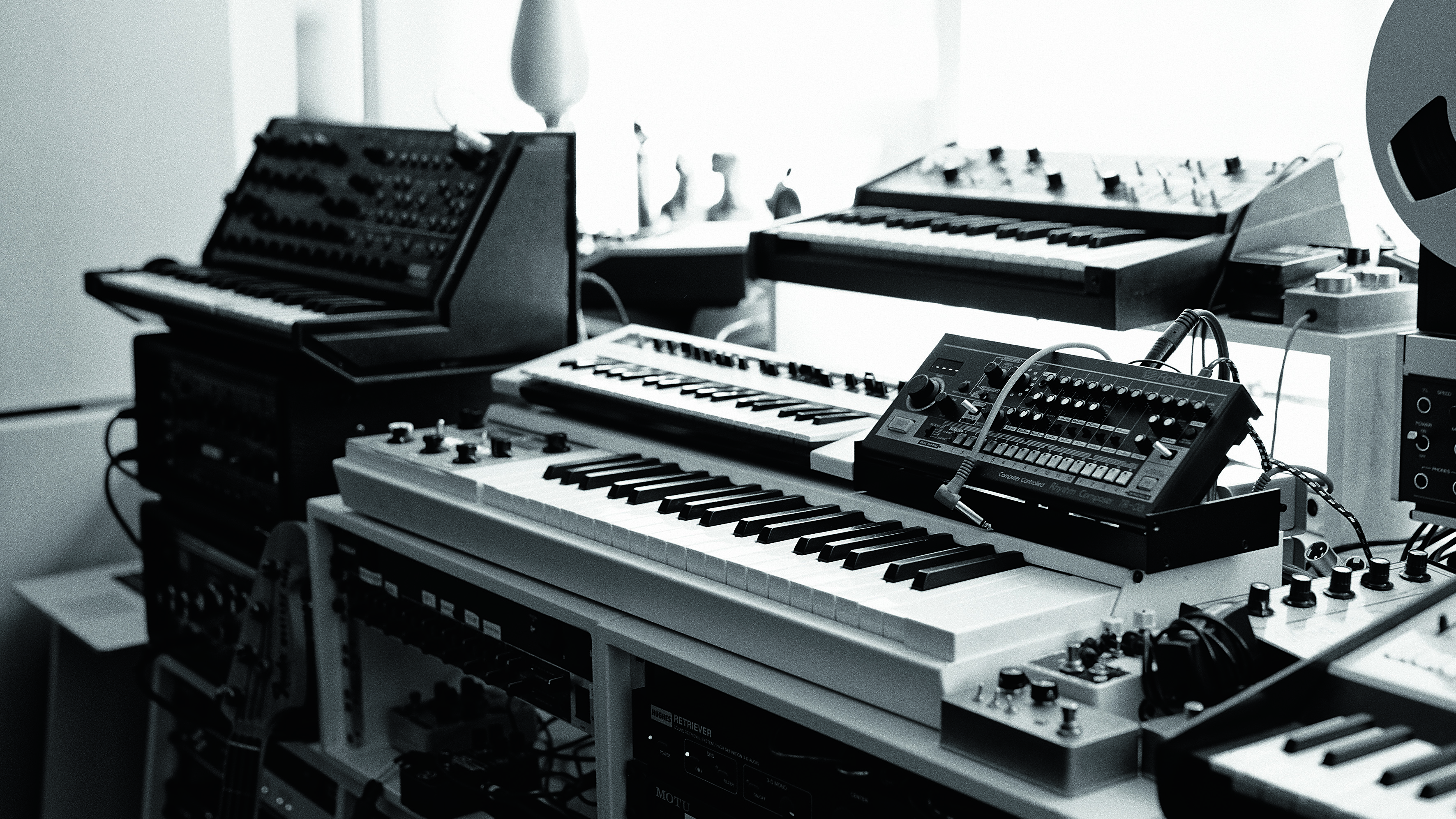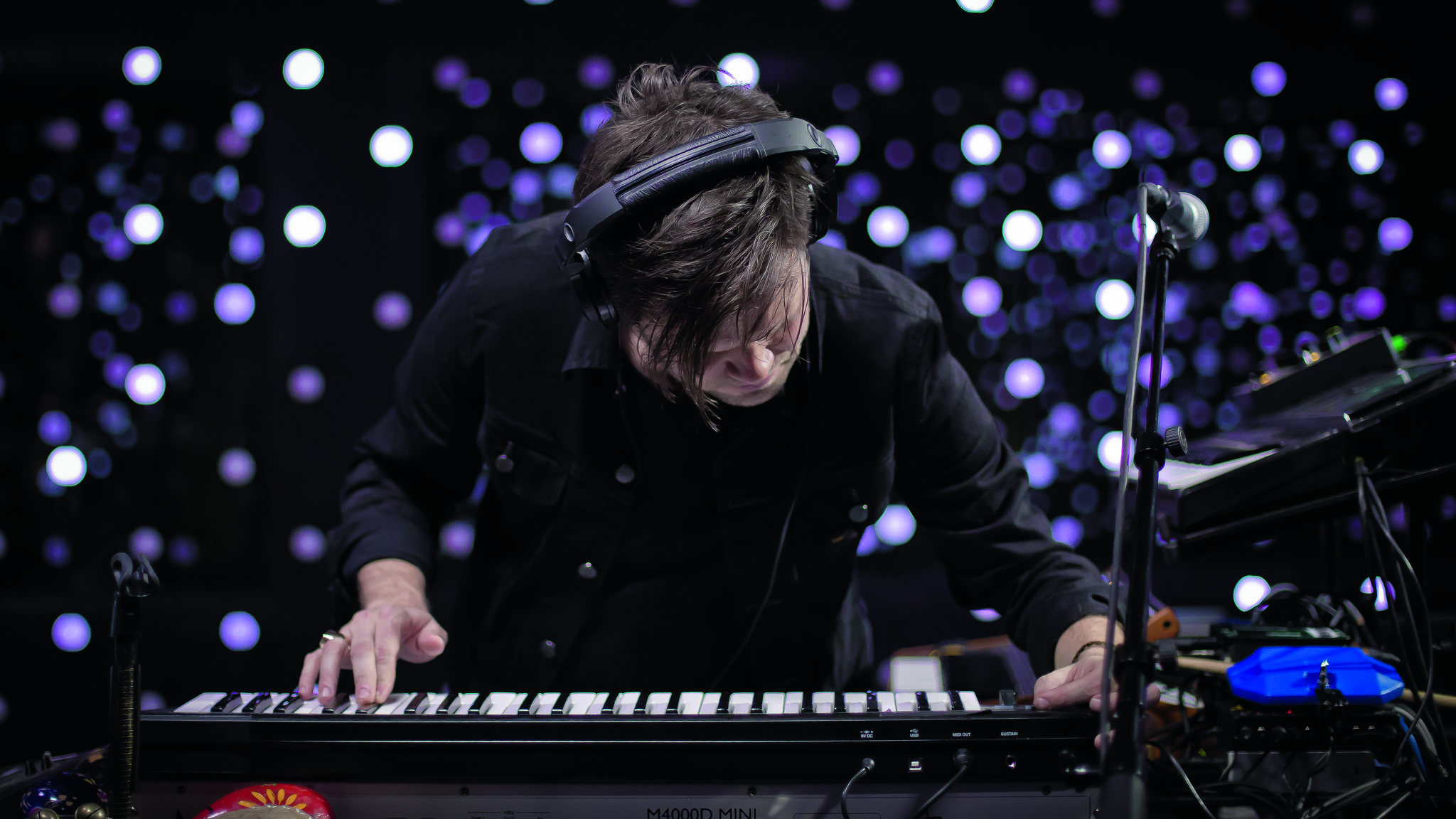Trentemøller: "I can’t read music, but I can play by ear and that’s been very useful for me"
After a serious dose of writer’s block, the Danish producer returned in 2019 with another wonderfully eclectic album, Obverse

You’ve really got to hand it to Mr and Mrs Trentemøller. Some parents might not be keen on their children smashing the hell out of their best pots, pans, plates, bowls and serving spoons, but when five-year-old Anders started drumming along with the latest pop songs in their Nyråd kitchen… they just let him get on with it.
“I was making so much noise that they eventually bought me a drum kit,” laughs Trentemøller. “But the crazy thing is that they put the drum kit in the room next to theirs! They had to listen to me first thing in the morning and last thing at night. I am so thankful for their patience. A lot of parents would have crushed my enthusiasm, but they were so supportive. They could see that I loved music.”
The piano was the instrument that would really make a difference. By the age of 10, Trentemøller realised he could play by ear… quickly picking up whatever song he heard. Soon enough, there was a school band, then bar bands, blues bands, indie bands and even a Queen tribute band.
Electronic music moved into his life via Portishead’s first album and an Ensoniq ASR-10, eventually leading to remix work for the likes of The Knife, Röyksopp and the Pet Shop Boys, plus a handful of his own excellent dancefloor-themed 12-inch releases. But it was his debut album, 2006’s The Last Resort, that finally announced his arrival. Top 5 in the Danish album charts, it showcased Trentemøller’s darkly catholic musical tastes and drew comparisons with both Thom Yorke and Aphex Twin.
“That album opened a lot of doors for me,” he admits on the phone from his studio on the outskirts of Copenhagen.
To be honest, that’s a bit of an understatement. As well as all the five solo albums, there’s been a Grammy nomination, Beatport Awards and a ton of Danish DeeJay Awards, he’s extended his remix CV to include UNKLE, Depeche Mode and cinematic maverick, David Lynch. He even turned Trentemøller into a live band, turning up at every festival from Glastonbury to Coachella.
His latest ten-song collection, Obverse, was released in 2019, but there was a worrying six-month stretch last year where Anders Trentemøller wondered if he’d ever release another album.
Get the MusicRadar Newsletter
Want all the hottest music and gear news, reviews, deals, features and more, direct to your inbox? Sign up here.

What went wrong?
“I had writer’s block! When I started work on the album, the band had just finished an intense period of touring and my mind wasn’t working so well. Going to the studio was not the problem. I went to the studio nearly every day. I would switch on the computer, load up my plugins and then… nothing happened. No problem. Maybe tomorrow things will be OK. But this went on and on.
“Eventually, some songs started appearing, but it was very clear to me that they were not good enough. That was so frustrating. To go into the studio – my favourite place in the world – and to be disappointed. After a while, you start panicking. Where have all the ideas gone? Where are my songs?
“And this is the interesting part of the story, for me. The breakthrough came when I eventually walked away from the studio. My girlfriend suggested that we should go on holiday and we rented a cottage in the Swedish countryside. Miles from anywhere. No internet. Very basic. After a few days, I actually forgot about music. It was no longer in my head. I wasn’t listening to it; I wasn’t thinking about it. I was just looking at the sky and the trees. Enjoying the fresh air. Sleeping!
“When we eventually went back home, the first thing I did – almost without thinking – was start writing songs. Ha ha! Sometimes, you can be too close to your music. Sometimes, you have to step back and take a deep breath.”
Like all of your albums, Obverse, isn’t an easy one to define.
“That’s good!”
If it had to have its own umbrella, it would probably be called chillout, but the album takes us from dark dub to experimental ambience to festival-friendly pop to the burbling melodies of Underworld.
“That has been my goal ever since I started making music. It’s how music works for me… it is not just one set of sounds and ideas. When I first signed a record deal, I tried to fit all my songs into one category because that’s what I thought people wanted to hear. I thought that it was what my record company wanted.
“The first few singles definitely had more of a dancefloor feel, but when I got the chance to record my first album, it was obvious to me that I could not work in such a small box. Yes, I was happy to call it electronic music, but I also wanted lots of other different elements. I wanted live instruments and machines. Cold sounds and warm sounds. Sounds that people could not categorise. Moving, moving all the time.”
Do you know where that restlessness comes from?
“From my childhood, definitely. I grew up before Spotify and before the internet took over. When I was a kid, listening to the radio at my parents’ house, I would hear everything… all in one afternoon. Some jazz, Iron Maiden, Depeche Mode, Madonna, the Stones, Danish pop, blues, Queen. And that was such a wonderful thing. To be able to hear all the different music. These days, there’s a station for every genre, which is great, but it also means you don’t get the chance to hear music from outside your usual playlist.
“At ten years old, I heard Venus In Furs by the Velvet Underground on Danish radio. Can you imagine that? This crazy, weird sound. Music can sound like this! Wow! If music can take you to all these incredible destinations, why would you want to stay in one place.
“That feeling continued when I started playing in bands. After I left school, I joined so many different bands. Jazz bands, indie bands, blues. I didn’t care what style it was, I just wanted to play music. And by playing with all these different musicians, I was challenging myself. Forcing myself to be creative. I even joined a Queen tribute band!
“When they told me that we were playing Bohemian Rhapsody, I thought, ‘Shit, that’s classical music. I can’t play that’. Over the next few days, I sat down with the song and it eventually came to me. I’ve never had a piano lesson in my life, but if I hear a piece of music – provided it’s not too complicated – it seems to make sense. I can’t read music, but I can play by ear and that’s been very useful for me.”

You’re a fan of live music and touring has become a big part of what you do, but there’s not exactly an overdose of drum solos and guitar riffs on the new album.
“It’s there. Live music is always there… on every album. But it doesn’t always sound like you expect it to. If I play a piano, I might stick it through a whole load of guitar effects pedals until it sounds like something else. Vocals and bass will go through effects pedals. Guitars will sound like synths. Synths will sound like guitars. Live drums will be recorded in such a way that the compressor and EQ is pushed right to the limit. I’m not trying to invent a different sonic world. I just want to try new things. When I listen to the song, I want to say, ‘What the hell is that?’ I want to surprise myself.
“Obviously, the computer is the heart of my studio, but there are times when it’s better to stay away from the screen. When you’re putting a song together in Ableton or Pro Tools, you automatically start to think of that song graphically… and you think of numbers. Four bars, eight bars. For the song, Sleeper, I just sat down at my upright piano. No computer. I played around with some chords and melodies, and when I found something I liked, I recorded it on my phone as a voice memo. All that I had to think about was the tune. Does it work? Does it keep me interested? When I played it back the next day, it still held my attention. OK, that works. Now it’s time to switch on the computer.”
“Even if there are only small touches of live music in the song, they still have an important part to play. They pull you away from the machines. I remember when I was making the first album and listening to a lot of electronic music. I used to call it ‘cut and paste music’. The same drum pattern all the way through the song, except for an extra hi-hat. All chords in the same key. The same melodies. Generally speaking, the more humanity I leave in the music, the better it will sound to my ears.
“There are times when the song will make that decision for you. If the machine-generated parts of the song sound very clean, the live bits might have a lot of manipulation… a contrast to the clean machines. If the machines are dirty, then I often add something like a beautiful acoustic guitar. Having fun with the studio. Playing with colours.”
Hardware
Apple MacBook Pro
4 x Universal Audio Apollo
ProAc SM100 monitors
Yamaha SY-1
Logan String Melody
Roland SH-101
Vermona PerFourMer
Software
Ableton Live
Soundtoys Decapitator
ValhallaDSP VintageVerb
Klevgrand Stark and Kleverb
UAD AKG BX 20
Spring Reverb
Waves Scheps Omni Channel
Plugin Alliance
Schoeps Mono Upmix
G-Force M-Tron and Oddity2
u-he Diva
Has your studio got a live room?
“Yes, I’m lucky. The studio is a good size. There is no way we could afford to have something this big if we were in the centre of Copenhagen, but we are on the outskirts and the rent is pretty good. Copenhagen has changed so much. I think it’s the same in cities all over the world. The old buildings are being smashed to the ground and all we have is expensive new apartments. The average musician or artist has no chance whatsoever. It feels like they have taken the soul out of the city. Just big business and fancy apartments. That’s a shame, really. I think all cities do need that creative element.
“The studio has three separate areas. A big live room, my studio and another studio that belongs to my drummer, Jacob Høyer. Jacob is also a great engineer and producer… the one who points me in the right direction when we are recording live drums and vocals.
“Although the vocals are a big part of this new album, I don’t really get involved too much in the lyric-writing process. Yes, I sit down with the vocalist and discuss themes, but I feel that lyrics have to come from the heart. And that’s easier if the singer has written them. A message in the lyrics is OK, but, for me, it’s better if the story is open to interpretation. I don’t like lyrics that dictate to the listener.
“I did write one song on this album: One Last Kiss To Remember. My first!”
What’s in your bit of the studio?
“At the moment, it looks a bit like an old spaceship! A few years ago, I started collecting vintage synths and then… things got a little bit wild. There’s not enough room, so they’re all lying around the place. They’ve all been retro-fitted with MIDI, so that they can be incorporated into a modern setup, which makes things a lot easier.
“It’s hard to pick out any favourites, but it would probably be my Roland SH-101 – always great for bass sounds – and the Logan String Melody, which is very similar to the Solina. You can hear it quite a bit on the early Cure songs. You can’t really do too much in terms of manipulation, but the beauty of this synth is that you don’t need to. The presets just sound so good.
“There are quite a few old drum machines, too. A couple of DMXs and some that go right back to the 60s. Little samba and rhumba boxes. Again, they’ve all been retro-fitted. They did get used on the album, but I don’t like to take whole loops. I prefer one-shots. Sample a bit of the loop, break it down into individual sounds and create something new. That gives you a whole lot more freedom.
“It’s not all vintage hardware. I’ve had a lot of fun with the Vermona PerFourMer. Like having lots of synth engines in one box, which means you can give each note of a chord a different sound. Some of the weirdest noises I’ve heard in a long time!”

Soft synths, too?
“Ha ha! Yeah… far too many. When I think back to when I was making my first records with an Ensoniq ASR-10 and a Juno-60, I can’t see how it was possible. There is something nice about having a very basic setup because it forces you to stretch your imagination, but would I want to go back to that basic setup? No! The modern studio offers so many possibilities. And everything is so much easier. I love the sound of the Mellotron, but where would I keep a real one? The M-Tron gives me the sounds I need and it’s always in tune.
“It’s the same with effects. I love an analogue reverb, but look at what you get with something like the Klevgrand Kleverb. Great sound with so much control. The ducking function is fantastic. It uses the dry signal like a sidechain and stops the vocals getting over-saturated.”
And the main platform…
“Ableton Live. I’ve been with Ableton for a long time, right back when it was mainly a DJ/live tool. I did use Acid for a short while in the early days, but Ableton quickly took over. I seem to remember the Ableton top end not being quite as clear as it was with Acid… one or two people complaining about that. It didn’t bother me. Ableton was so much simpler when it came to putting a song together.
"I did use Acid for a short while in the early days, but Ableton quickly took over."
“A lot of people like to use the Session View, but I tend to use it as an old-fashioned recorder. And that’s maybe why I’m getting a little bit frustrated with it at the moment. Personally, I feel that Ableton is still aimed at the DJ world; the fully electronic world. If you’re recording 20 takes of vocals, it doesn’t make life so easy. I need an overview of those takes. I want to know what’s in there.
“I wonder if Pro Tools is the answer? Record all the live stuff in there, then bring it over to Ableton once I’m putting the song together.”
Just before you go, can we ask about when you used to work as kindergarten teacher? We’ve seen you mention it in interviews and we’ve always wondered if you used to take your tunes into class for the tots to bang their heads to…
“Yeah, I worked in the kindergarten for seven years, but gave it up when the music career started to happen. I didn’t take my songs in, but I did take the Ensoniq sampler into class. I recorded their voices and played them back… really low and really high. Chopping them into loops. They loved it! Watching their faces reminded me of when I first heard a sampler. The joy. The fascination. The sense of wonder. Thinking of all the music I could make with it.
“I’ve often wondered if any of the kids remember that day. Maybe one of them is putting a studio together right now. Maybe they’ll be interviewed by Computer Music. ‘It all started when this crazy teacher brought a sampler into kindergarten class’. That would make me happy.”


Computer Music magazine is the world’s best selling publication dedicated solely to making great music with your Mac or PC computer. Each issue it brings its lucky readers the best in cutting-edge tutorials, need-to-know, expert software reviews and even all the tools you actually need to make great music today, courtesy of our legendary CM Plugin Suite.
“I’m looking forward to breaking it in on stage”: Mustard will be headlining at Coachella tonight with a very exclusive Native Instruments Maschine MK3, and there’s custom yellow Kontrol S49 MIDI keyboard, too
MusicRadar deals of the week: Enjoy a mind-blowing $600 off a full-fat Gibson Les Paul, £500 off Kirk Hammett's Epiphone Greeny, and so much more










